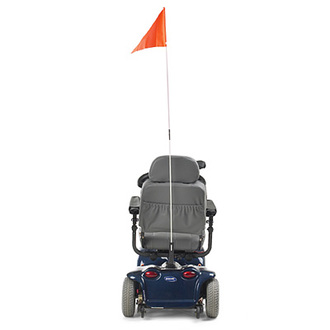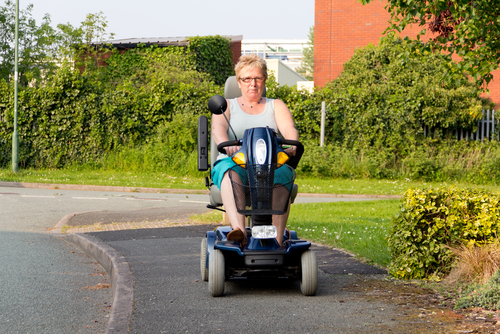Buyer’s Guide to Mobility Scooters
A step-by-step guide to choosing the right mobility scooter for you .
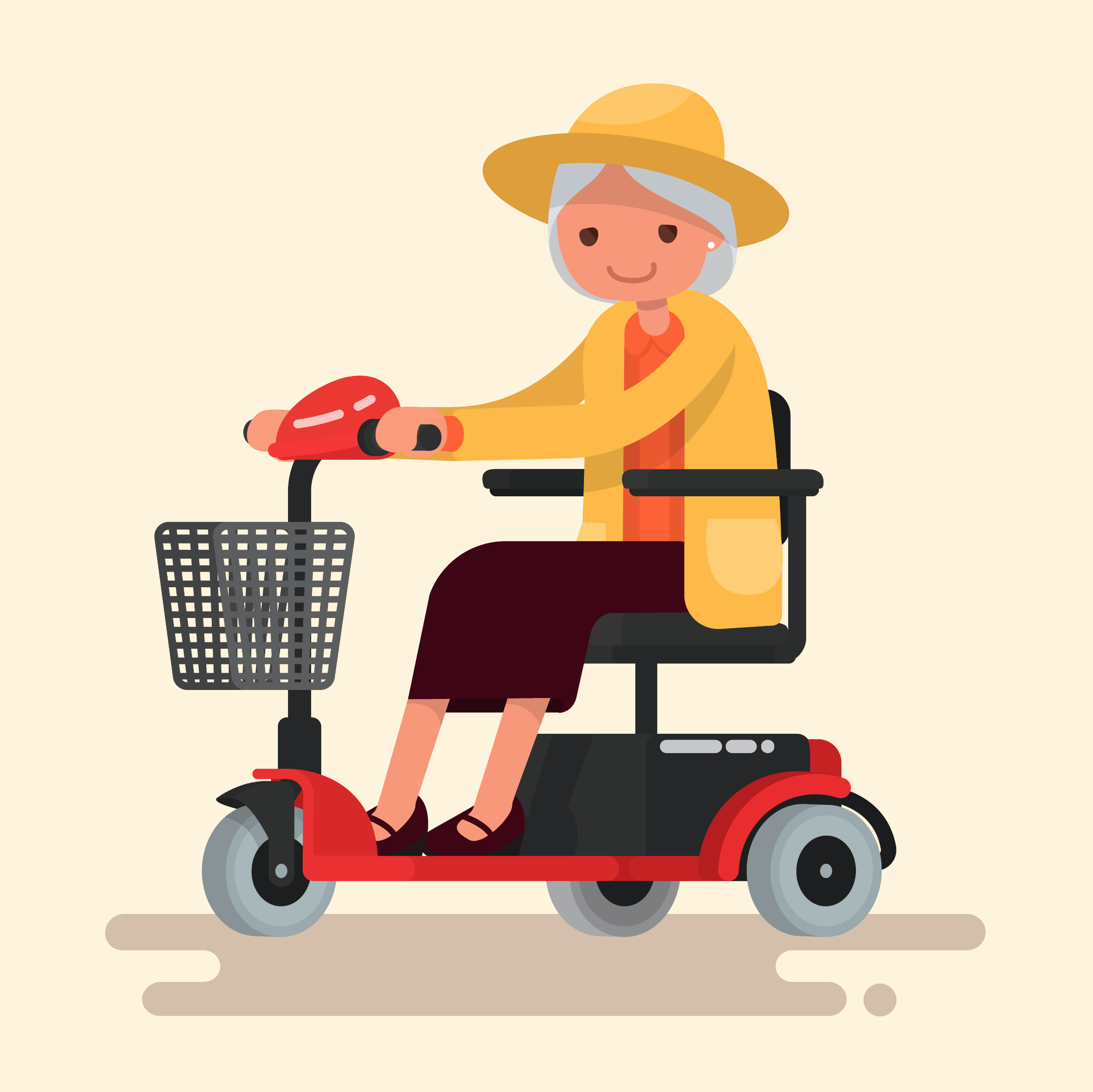
Mobility scooters have changed the lives of millions of people with health issues and disabilities. They allow people who may not have previously been able to travel far without assistance, to gain a significant level of independence.
They can also help to combat the social isolation and health implications of the elderly or someone living with a disability. With a mobility scooter, it’s easier to partake in daily activities and excursions. No longer does a trip to the shops or to meet a friend for coffee require a high-level of planning. Simply jump onto your scooter and away you go.
If you’re considering a mobility scooter for yourself or a loved one, there are a few things to consider. In this guide, we go over the questions to ask before deciding on a scooter. We also outline the different types of mobility scooters and the features to help find the right scooter for you.
Is a Mobility Scooter right for you?
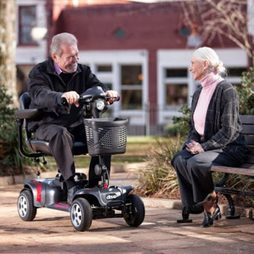
There are many reasons why someone would choose to use, or not use, a mobility scooter and it ultimately comes down to a personal or family decision.
For people who are having difficulty driving, a mobility scooter can help to replace a motor vehicle. This can be a particular issue when it comes to road safet. While you do still need a level of confidence and ability to operate a mobility scooter, the ease of use and low speeds presents less of a hazard to the user and others, compared to a car.
A mobility scooter can also be used in conjunction with other forms of transport. The folding mobility scooters, for example, will fit in the boot of a car and can be taken out for use around a shopping centre or for short trips where using a car may not make sense.
Mobility scooters can also provide temporary assistance to someone recovering from an injury or operation. This allows them to continue to maintain their independence while not tiring themselves out with too much physical activity.
What to consider
The most important thing to consider when choosing a mobility scooter, or any assistance aid, is whether the user has the confidence and ability to operate it as intended. While a mobility scooter allows someone to get around without too much physical exertion, they do need to be able to get on and off the scooter without assistance and be able to operate it in a way that’s safe for them and other pedestrians and road users.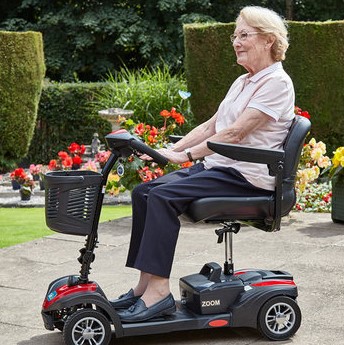
As a first stop, it’s a good idea to chat with your occupational therapist about your ability to use a scooter. They’ll be able to help you understand the physical requirements and discuss how you can make the most of it as you go about your day.
In order to do the things you plan on doing with your mobility scooter, for example heading to the shops or visiting family, you need to be able to operate it safely.
This includes being able to:
- Operate the hand controls and turn left and right
- Turn your head to look for pedestrians and traffic,
- Have adequate vision and hearing to be aware of your surroundings,
- Be able to react quickly and confidently in uncertain situations,
- Be able to concentrate for the duration of your trip,
- Be able to balance when travelling on a slope or uneven ground,
You’ll also need to be able to get on and off the scooter without assistance, and walk short distances unaided or with a walking aid. If you’re looking for a folding mobility scooter or a small scooter that dismantles, also think about whether you’ll be able to lift it into a car or if you’ll need assistance (and if they will be able to lift it).
What type of scooter do you need?
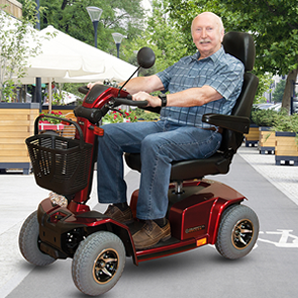 The range of mobility scooters available now makes it easier to find a model that suits your needs, requirements and budget. Of course, the wide selection can also make it a little harder to figure out what’s right for you.
The range of mobility scooters available now makes it easier to find a model that suits your needs, requirements and budget. Of course, the wide selection can also make it a little harder to figure out what’s right for you.
An important question to consider before you go selecting a scooter is what you need it for?
Do you want a small scooter to help you get around inside at home or at the shopping centre? Or do you want something to help you get down to the local shops and around to your friend’s house?
Alternately, do you need something more robust that will take the place of a car for trips to appointments and locations further away than your suburb?
Also consider where you live and the terrain. While a small scooter can navigate smooth, flat pathways with ease, if you live in a hilly area or somewhere with uneven ground, you’ll need something with a bit more power to avoid being left stranded.
It’s important to also assess your own physical attributes. Smaller scooters will have a smaller seat and footbed. If you’re tall or have a large frame, you will likely need something a bit larger to accommodate you.
Scooter Models
Now you’ve considered the type of trips you’ll be taking with your mobility scooter, as well as where you live and what size you’ll need, let’s take a look at the models available.
Small Mobility Scooters
Range: up to 20km
Offering maneuverability and convenience, a small scooter is ideal if you want something to get around on indoors and need to be able to fit it in the back of your car.

Features you may find in these models
- Easy to disassemble for transport,
- Small size for maneuvering through crowded areas,
- Basic suspension for a smooth ride,
- Removable battery for travel,
- LED front and rear lights for visibility,
- Front basket for shopping,
- Shop Small Mobility Scooters
Mid-Sized Mobility Scooters
Range: 20km - 40km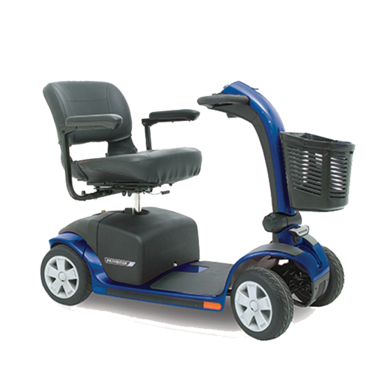
Medium scooters give you the ease of use of a smaller scooter with the extra power to tackle small inclines and outdoor terrain. This is ideal if you plan to make a lot of trips locally, like to the shops or a friend’s house nearby.
Medium sized scooters may also be the best option if you intend to use it on public transport. While restrictions vary, you’ll generally be able to take your mobility scooter on any public transport that’s also wheelchair accessible.
Features you may find in these models
- Puncture-proof, knobbly tyres for extra traction outdoors,
- LED front headlight, taillight and indicators for visibility,
- Front basket for shopping,
- Basic suspension for a comfortable ride,
- Padded seat including arm rests and headrests,
- Rear view mirrors for extra safety,
- Shop Mid-Sized Mobility Scooters
Heavy Duty Mobility Scooters
Range: 25km to 50km
Heavy duty or large scooters are better suited to handling difficult terrain and long distances. You’ll get a smoother ride thanks to the pneumatic rubber wheels and suspension. Models in this range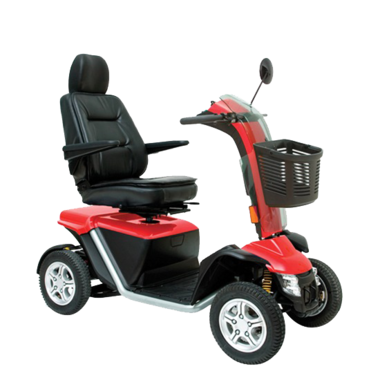 also tend to have more supportive seats, including padded arm rests and headrests.
also tend to have more supportive seats, including padded arm rests and headrests.
Features you may find in these models
- Pneumatic tyres for a smoother ride over uneven terrain,
- Deluxe padded high-top seat,
- Hydraulic braking system for more control,
- Full lighting system including LED headlight, kerb light, taillights and indicators,
- Large front basket for shopping,
- Ability to add additional storage and accessories,
- Shop Heavy Duty Mobility Scooters
Using Your Scooter
When you first get your scooter
We suggest first operating your mobility scooter somewhere flat and free of traffic and obstacles to get a feel for the controls. Practice starting, stopping, turning and going up and down kerbs. Make sure you know how to operate all the controls, are able to adjust your seating position and are comfortable getting on and off without assistance.
Once you’ve got your scooter home, you want to ensure you’ll be able to use it for many years to come.
Consider where you’ll store it when it’s not being used. If it’s small you might be able to keep it inside. Larger mobility scooters may be kept in a garage or carport. Wherever you park it, make sure you have handy access to a power point so you can charge your scooter between uses.
It’s important to have insurance to protect you from theft or damage. Check to see if your current home and contents insurance covers your mobility scooter. Some providers will add it for an additional premium. Otherwise, you can obtain separate mobility scooter insurance. Call your current provider and ask, or ring around to find a competitive quote. Make sure your policy covers damage and theft to your scooter, as well as damage to property or other people.
Your mobility scooter will need to be serviced annually to keep it running well. Aidacare offers mobility scooter servicing. Contact 1300 133 120 to find your local service centre.
Charging your mobility scooter
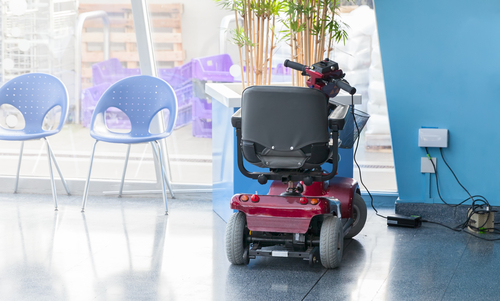
To get the most out of your mobility scooter, you should ensure the batteries are fully charged before each outing.
- Turn the scooter power switch to the OFF position
- Connect the charger to the charging port on the scooter and plug the cord into a power outlet
- The red/orange LED light indicates that the mobility scooter is charging
- The light will change to green when the scooter’s battery is fully charged
- Once the green light appears, disconnect the charger from the charging port and then from the power outlet
The approximate charging time for the mobility scooter battery is 8-10 hours. We suggest charging your scooter overnight to make sure it’s ready for you to take out the next day.
Staying safe
Before you head out on any trip, check your battery is fully charged and everything is properly secured. Just like any vehicle, you should not use your mobility scooter if you’re feeling tired, unwell or have been drinking.
If you’re travelling outside, you’ll want to be seen by traffic and other pedestrians. Use your lights if your mobility scooter has been fitted with them. You can also add an orange safety flag for additional visibility. Make sure you don’t overload your mobility scooter with too many accessories or bags, and anything you carry does not obstruct your view or ability to use the controls.
Finally, plan your route and know where you’re going. If you can, avoid busy roads and narrow pavements and try to cross the road at marked pedestrian crossings or traffic lights.
And if you’re going to be taking your scooter out for long trips, you should consider breakdown coverage. The RACV offers a roadside breakdown service for a low annual fee. If you’re interstate, check with your state breakdown service about what’s available where you live.
Getting Around
Ticket to ride?
Mobility scooters are designed to travel on the footpath and anywhere else pedestrians can go. They’re not considered a motor vehicle and they can’t travel on the road, except when crossing or where there is no footpath.
Generally you won’t need to register your mobility scooter as they aren’t considered a vehicle. The exception to this is Queensland, where you will need to register your scooter with the Department of Transport and Main Roads if you intend to use it outside. Registration is free and includes third party insurance.
It is recommended you check the regulations in your state before you buy a mobility scooter as they may have changed.
Make sure you’re aware of the road rules for pedestrians and that you know where you can and can’t take your scooter. Take extra care when travelling through crowded areas like shopping centres, and when crossing roads when there are no traffic lights or zebra crossing.
Mobility scooters and public transport
As a general rule, mobility scooters are permitted on public transport and treated like wheelchairs and other assistance aids. It’s essential you plan your trip before you set out so you can be confiden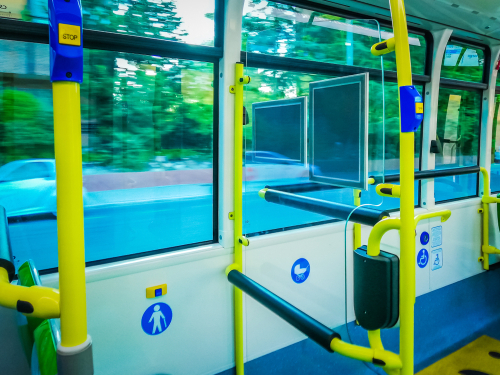 t you’ll be able to get on and off at your destination. Allow extra time to get there.
t you’ll be able to get on and off at your destination. Allow extra time to get there.
When travelling by train, position yourself at the front of the platform where the first carriage will stop and make sure you’re visible to the driver. They will lower a ramp for you to get on, then ask which station you’re travelling to so they can help you to disembark.
If travelling by bus or tram, check your route to see if it offers any accessible services. Sometimes the operator will add an accessible service if you request it in advance – so it doesn’t hurt to check.
Wait at the tram or bus stop where you are visible. The driver will extend a ramp to help you get from the kerb onto the bus or tram. When it comes time to disembark, they’ll extend the ramp for you again.
While restrictions vary between states and transport, generally all mobility aids including wheelchairs and scooters should:
- fit within a space of 1300mm (length) by 800mm (width)
- be no more than 750mm wide
- have a maximum height of 1500mm
While your mobility scooter will generally fit within these guidelines, if you’ve added any accessories like a canopy or flag, you may exceed it.











































































